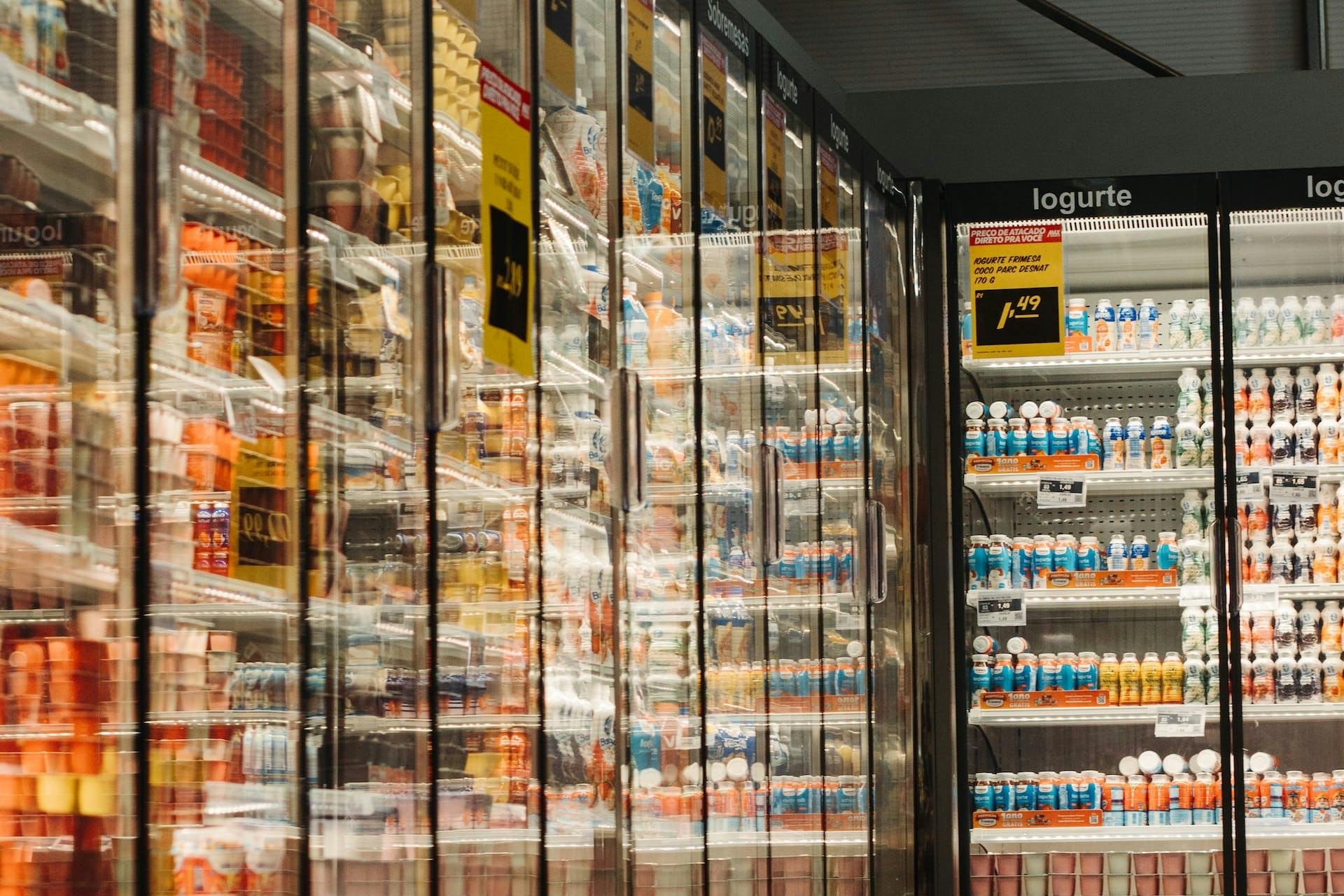In the past, the term "Food as Medicine'' was primarily associated with functional or integrative healthcare practitioners, referring to the therapeutic power of nutrition in strengthening bodily defense systems and activating healing pathways to protect and recover from illness and injuries.
Once considered a fringe idea, "food as medicine" now carries significant weight in clinical research. This approach is widely accepted, supported by the latest nutritional science, with conventional healthcare systems providing "Produce Prescription" or "Food as Medicine" programs. These initiatives allow doctors to prescribe fruits and vegetables to patients, especially those with chronic conditions and facing food insecurity. This recognizes the vital link between diet, health, and metabolic well-being.
At a time when nearly half of all U.S. deaths are connected to diet-related illnesses, and studies indicate a 75% higher mortality risk for food-insecure adults, the urgency for food system reform and improved access to health-promoting whole foods has never been more critical [2].
What are Food as Medicine programs?
In 2010, Wholesome Wave co-founder Michel Nischan discovered a program in Ypsilanti, Michigan offering "Fruit and Vegetable Prescription" vouchers to increase low-income community members’ access to fresh produce [3]. Partnering with pediatrician Dr. Shikha Anand, he created a trial program with subsidized produce vouchers, engaging nutrition education sessions, and health outcome tracking. This approach aimed to better address the nutritional needs of at-risk individuals and those with diet-related conditions [1].
Fast forward 8 years, a report in the Journal of the American Medical Association highlighted diet-related diseases as the leading cause of death in the U.S., prompting the formation of the Gus Schumacher Nutrition Incentive Program (GusNIP) in 2018 [4]. Funded by the USDA, these Food as Medicine programs allow healthcare providers or insurance payers to distribute cash benefits for produce purchases [5].
In 2022, The Rockefeller Foundation pledged $4.6M in grants to initiatives preventing, managing, and treating diet-related illnesses, including Food as Medicine programs [6]. This marked a notable shift towards prioritizing nutrition over pharmaceuticals.
In February 2023, the Biden administration authorized the use of Medicaid funds for fresh produce and nutrition counseling [7].
These programs have evolved over the years into formalized Food as Medicine programs. Today, they screen eligible participants and identify those most in need, foster partnerships between these patients and local farmers markets, grocery or corner stores, and even healthcare facilities referred to as “food pharmacies” [1]. These initiatives increase access to fresh fruits and vegetables to improve health outcomes for families in diverse communities across the United States.
However, the importance of Food as Medicine programs goes beyond the evident health benefits they provide. A staggering 34 million Americans still face food insecurity, and diet-related illness directly contributes to healthcare costs amounting to $50 billion [8, 9]. Food as Medicine programs represent an elegant solution to intertwined issues.
Why are Food as Medicine programs critical for disease prevention?
A comprehensive analysis published by The Lancet in 2019, spanning 195 countries over 27 years, showed a critical connection between diet and health [10].
Surprisingly, the absence of protective foods (whole, unprocessed options) posed an equal or even greater risk of mortality than excessive consumption of processed foods.
However, Americans are not consuming enough of these protective whole foods for a number of reasons. Fruits and vegetables are often more expensive than processed convenience foods, making them less accessible [11]. Many economically distressed communities face the challenge of food deserts, where enough food is available, but none of it is healthy [12]. Consequently, diet-related health disparities heavily impact low-income households, leading to a widening health gap.
The Supplemental Nutrition Assistance Program (SNAP) in the United States provides financial help to purchase food for eligible low-income individuals. However, due to lobbying by the food industry and misaligned incentives in the healthcare system, a large portion of SNAP benefits, estimated to be around 55%, are spent on unhealthy ultra-processed foods [13].
Real food is medicine, and in contrast, ultra-processed foods can have a devastating effect on one's biology, leading to the onset of insulin resistance, glucose dysregulation, inflammation, weight gain (particularly visceral fat), and fatty liver disease, all of which contribute to chronic diseases like diabetes, obesity, cardiovascular disease, and cancer.
Authentic and independent Food as Medicine programs are necessary to provide healthy, nutritious foods and educate people on the impact of diet on their health. Combined with tools like wearables or continuous glucose monitor (CGM) devices, harnessing insights from your own biology can empower you to take control of your health. This means you can make decisions that are personalized and targeted to your needs. These approaches help individuals lead healthier lives, manage existing health conditions, and even prevent certain diseases from developing in the first place.
Studies have shown that implementing Food as Medicine programs, specifically targeted at diabetes patients with food insecurity in the U.S., could have remarkable health and economic impacts [14].
Additionally, they could gain approximately 260,000 quality-adjusted life years over the lifetime of current patients, thereby enhancing healthspan, which is the period during which an individual enjoys good health free from pain and disease. Through these health gains, these programs would also save an estimated $39.6 billion in healthcare spending and $4.8 billion in costs of lost productivity [14].
78% of Americans believe that food can treat their health conditions, however, 62% are confused about which so-called "healthy" foods can actually work like medicine [15]. For many people the idea that specific chemical compounds in certain foods can directly influence our body's capacity to heal and operate effectively might seem foreign or unfamiliar.
Furthermore, perhaps even less well-known is the concept of metabolic health and the importance of minimizing blood sugar spikes via nutrition protocols such as intermittent fasting and strategic food combining for overall health.
So, what’s the solution? We need to incorporate Food as Medicine initiatives into public health policy. It’s not only important for stopping disease in its tracks, but it’s also a way to tackle the effects of those long-lasting food-related health issues.
What are the challenges associated with Food as Medicine programs?
While Food as Medicine programs offer clear health benefits, implementing them on a large scale may be challenging, especially considering the limitations of our modern food system. A recent qualitative survey study evaluated the perspectives of US healthcare providers involved in produce prescription projects funded by the USDA. The study revealed three main issues tied to these initiatives [16]:
- Tracking health results. Healthcare providers struggled to incorporate the patient’s health measures into their current clinical workflow, making it difficult to validate how effective these programs actually work. This means that the necessary processes and infrastructure need to be developed and put in place to really understand how these initiatives truly impact patients’ health.
- Maintaining attention to detail. Running and evaluating these programs well requires meticulous planning and coordination, where various tasks such as training, patient education, survey collection, and data gathering all need to be done right. Since these programs are legitimate clinical solutions to serious health problems, making sure everything's done perfectly is a big deal.
- Securing funding and sustainability. Ensuring there is enough money and resources for clinic-based staff to keep up with program reporting and evaluation is crucial for the long-term success and longevity of Food as Medicine projects.
Furthermore, rolling out these programs may be further complicated by the presence of food deserts, which are more common in low-income areas. This limits access to fresh and nutritious foods, making it almost impossible for these communities to engage in such programs at present.
Education and effective nutrition counseling will also be essential components of the Food-as-Medicine Programs puzzle. It's critical to empower vulnerable populations with knowledge about how diet impacts health, particularly since metabolic dysfunction lies at the heart of many chronic diseases [17].
Addressing these challenges will require collaborative efforts from healthcare providers, policymakers, and stakeholders to create innovative solutions. By overcoming these obstacles, we can unlock the full potential of Food as Medicine programs, creating a future where preventive nutrition plays a central role in disease prevention and community health.
What’s next for Food as Medicine programs?
Food as Medicine programs have a bright future. This approach is receiving substantial funding and focused research, and the growing demand for such interventions signals a promising path ahead.
To support these programs, you can make a difference by voting with your dollar and by consciously backing local farmers and products. By reducing the demand for ultra-processed foods and advocating for healthier options, you're contributing to a healthier food system that benefits everyone.
Wondering how to get involved? Check in with your healthcare provider for local programs in your area. If you have a nearby farmers market, strike up a conversation to find out if they're part of any health-focused initiatives. By participating and spreading the word, you're playing a role in building a healthier community and future for all.
Key takeaways
- Diet-related chronic diseases, preventable through good nutrition, rank among the leading causes of death in the US, contributing to substantial healthcare costs that threaten the economy.
- While fresh whole foods have the power to manage, treat, reverse, and prevent chronic diseases, issues of accessibility, availability, and affordability hinder many from consuming these healthful options, leading them to opt for cheaper, processed convenience foods that compromise their well-being.
- Food as Medicine programs, such as prescribing fruits and vegetables, offer a promising therapeutic strategy for individuals struggling with nutrition-related chronic illnesses, such as obesity, diabetes, cardiovascular disease, and cancer.
- Achieving success in the Food as Medicine approach through produce prescription programs requires careful consideration of scalability, validation, funding, and outreach, along with support from policymakers, offering simultaneous benefits to the economy, environment, and healthcare systems.
References:
- https://www.daisaenterprises.com/uploads/4/4/0/5/44054359/produce_prescription_programs_us_field_scan_report__june_2021_final.pdf
- https://www.bsu.edu/news/press-center/archives/2020/8/study-food-insecurity-leads-to-longterm-health-issues-for-many-americans
- https://jamanetwork.com/journals/jama/fullarticle/2678018
- https://www.ncbi.nlm.nih.gov/pmc/articles/PMC7675025/
- https://www.rockefellerfoundation.org/news/the-rockefeller-foundation-invests-4-6-million-to-scale-food-is-medicine-initiatives-in-u-s/?mc_cid=c0178952d0&mc_eid=2d4c3a6c5c
- https://www.wsj.com/articles/u-s-begins-allowing-medicaid-money-to-be-spent-on-food-62f78cac
- https://www.ers.usda.gov/topics/food-nutrition-assistance/food-security-in-the-u-s/key-statistics-graphics/
- https://journals.plos.org/plosmedicine/article?id=10.1371/journal.pmed.1002981
- https://www.thelancet.com/article/S0140-6736(19)30041-8/fulltext
- https://www.ncbi.nlm.nih.gov/pmc/articles/PMC4586446/
- https://www.ncbi.nlm.nih.gov/pmc/articles/PMC9857183/
- https://www.ncbi.nlm.nih.gov/pmc/articles/PMC9257471/
- https://www.ahajournals.org/doi/10.1161/JAHA.122.029215
- https://www2.deloitte.com/us/en/insights/industry/retail-distribution/future-of-fresh-food-sales/fresh-food-as-medicine-for-the-heartburn-of-high-prices.html
- https://www.ncbi.nlm.nih.gov/pmc/articles/PMC9502043/#b0030
- https://www.nature.com/articles/s41579-020-0433-9


